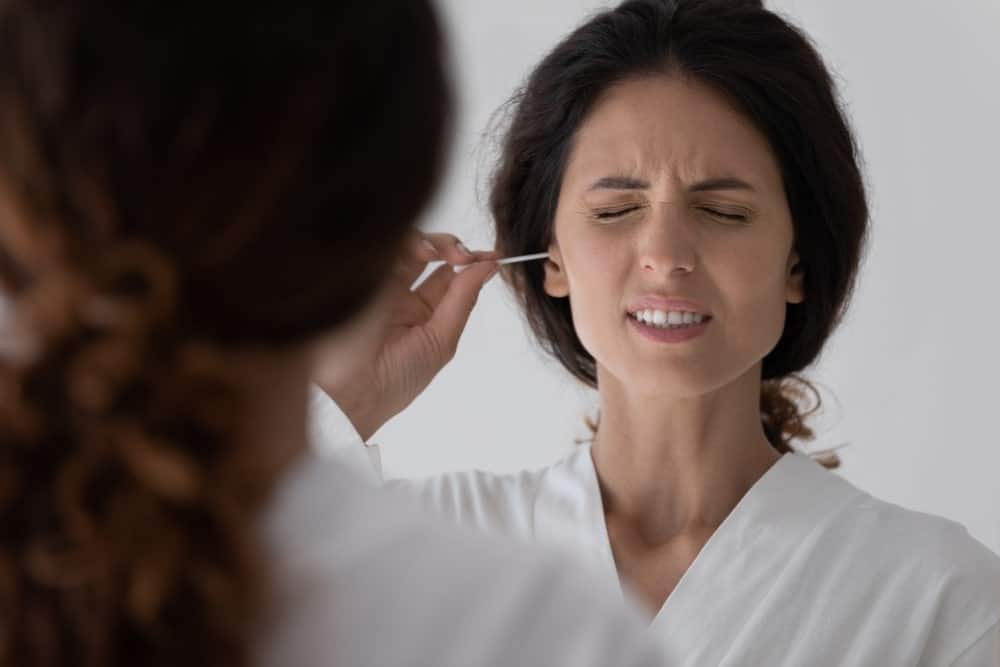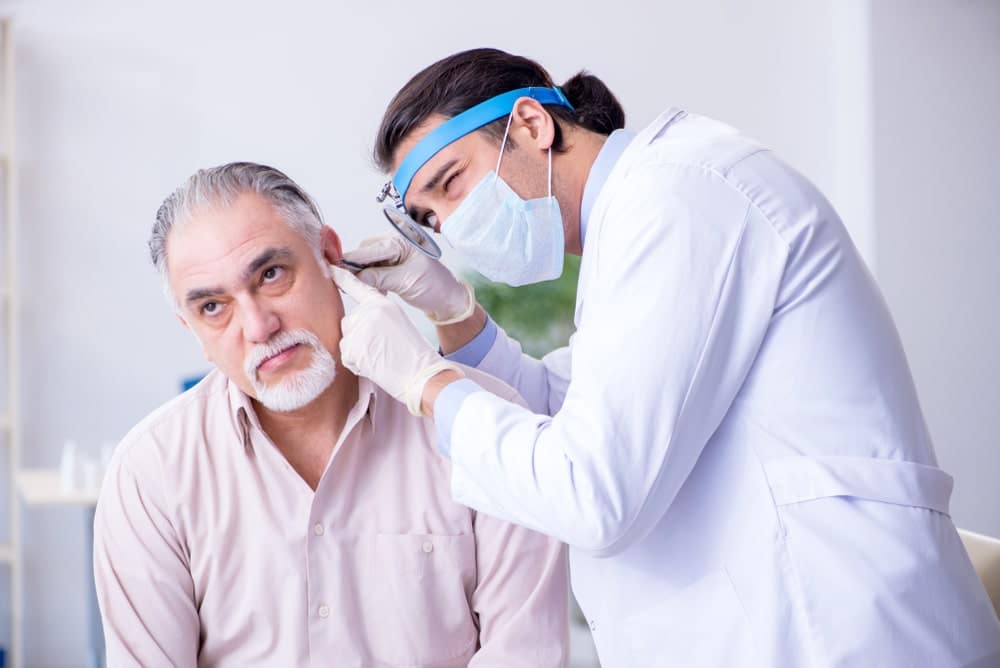Be aware of the signs of earwax blockage and take care of your ears!
Have you ever had that nasty feeling of a constant buzzing in one of your ears? Or how often do you feel them plugged? Besides being annoying, the latter symptom makes you look like your grandma when she used to tell you to repeat what you just said because she didn’t hear you.
Jokes aside, these could be some of the silent signs of earwax buildup. Even if it’s a small amount of wax, seeing a doctor is recommended. Cerumen impaction, also known as earwax buildup, can lead to hearing loss, itchiness, constant ringing in your ears, and ear pain in general.
But, hey! Don’t panic, because this can happen to anyone, and it isn’t something you can’t get through. Now, without further ado, let’s see what the signs of earwax blockage are and what is causing it.
What happens if the bad earwax is not cleared away?
Untreated overproduction of earwax may worsen the symptoms of earwax impaction. Tinnitus, ear discomfort, hearing loss, and other problems are potential symptoms.
It may also be difficult to look into your ear due to an accumulation of earwax, which might lead to possible problems remaining untreated.

1. An itching sensation inside the ear
An itchy feeling in your ear may be the result of having too much ear wax. And what do you do when this happens? Don’t try to stick cotton swabs in it to make it go away! That’s a no-no when it comes to itching ears. While you may feel that it helps, in reality, it does more harm than good.
There is a chance that putting items like your finger or a cotton swab inside your ear canal might introduce dangerous germs and result in an infection. Even though it can feel like you are cleaning your ears, you are just clearing a tiny portion of the ear wax; the rest is being forced deeper into your ear canal, which leads to an accumulation of earwax.
In certain situations, doctors can advise visiting once a year or every six months so they can securely and effectively remove extra earwax without endangering your ears.
2. Dizziness
One of the warning signs of earwax blockage is dizziness. This usually occurs later if the buildup becomes worse. Let’s see what happens. Dizziness, or vertigo, can be brought on by anything that affects the normal functioning of your ears. Earwax plugs shouldn’t be in your ears, and the longer they are, the harder and more unmovable they get. If the issue that causes dizziness is not treated, it could result in a fall.
3. Earache or plugged ears
Perhaps this is one of the most common signs of earwax blockage. When earwax accumulates and forms a blockage in the ear canal, it may be quite uncomfortable, especially when it starts to become solid. An ongoing earache brought on by pressure and irritation may be quite annoying since extended discomfort wears out both your body and mind.
In this case, you can also have a partial loss of hearing, and if this happens, please make an appointment to get your ears checked as soon as possible.
4. Buzzing or ringing in the ears
At the beginning of the article, I asked you if you ever had that nasty feeling of a constant buzzing in one of your ears, because this is one of the worst signs of earwax blockage. Also known as tinnitus, is caused by the loss of hearing.
Although prolonged exposure to loud noise is typically linked to this issue, impacted earwax is also a lesser-known cause of tinnitus. Your inner and middle ears pressurize due to the wax blockage, sending nerve impulses to your brain. Your brain interprets these signals as sounds, such as humming or buzzing.
Besides having your ears cleaned every six months, it is also important to protect them by listening to music at a lower volume and, if and when you go to live concerts, wearing headphones.
5. Smelly earwax
While earwax is normal and very important for keeping our ears clean and healthy, too much of it or a smelly one can indicate a serious issue. So, if you reached this far with reading, smelly earwax is one of the signs of earwax blockage.
There are typically other symptoms present in addition to smelly earwax. See your doctor if using home remedies to treat your earwax problem doesn’t resolve the problem in a few days.

How can you keep your ears as clean as possible without damaging them?
Always clean the outside of your ear
Try to completely dry your ears after taking a shower or bath. Under no circumstances should anything, not even cotton swabs, be placed within your ear canal. Contrary to what you may think, using cotton swabs might cause greater earwax production in your ears in addition to harming your eardrum.
Ear irrigation
You might also try syringing or irritating your ear, which involves rinsing your ear canal with water or saline solution using a syringe without a needle, of course. Generally speaking, you want to use a cerumenolytic solution to soften the wax first. Afterward, you’ll gently irrigate your ear using a bulb syringe.
If you plan on performing this procedure at home, ensure you have the necessary tools. On Amazon, you can find a kit for complete ear care that’s recommended by otolaryngologists and is very easy to use on your own. It includes an ear bulb syringe and other tools you may need to make the procedure as safe as possible.
Use various solutions to dissolve the earwax
As I previously mentioned, cotton buds aren’t exactly the best method to clean your ears without damaging them. If ear irrigation scares you and you won’t be able to do it on your own, try various solutions that can dissolve earwax. Some of the best solutions recommended by otolaryngologists are baby oil, glycerin, hydrogen peroxide ear drops, saline solution, or mineral oil.
Apply a few drops of these solutions to the injured ear, then lie on the other side. This will allow the solution to work its way into the injured ear. Use these oils cautiously, and always read the instructions on any over-the-counter earwax removal product you use.
Bottom line:
Same as other diseases, the amount of wax your ear produces can also be inherited. This is not something that we can control, but on the other hand, our day-to-day activities can help or worsen it.
Using headphones, earbuds, or hearing aids for a longer period can affect your ears pretty badly. Especially the quantity of wax produced by them. If you notice that you have more earwax than usual, try to minimize the amount of time you’re using them.
In the case of hearing aids, it may not be possible, so just make sure you keep them as clean as possible. Furthermore, even though it may be tempting, avoid cleaning the earwax with cotton swabs. The inside skin of our ears is pretty sensitive, and this can trigger even more wax production.
You may also like 6 Serious Signs Your Colon Needs Help.





